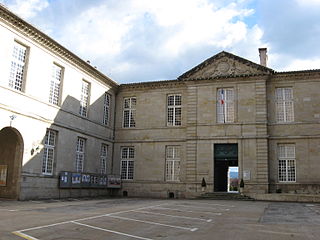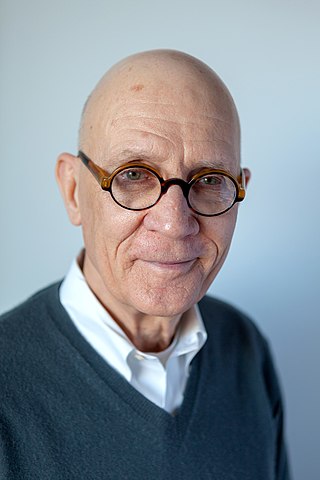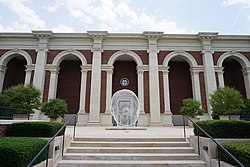
Diego Rodríguez de Silva y Velázquez, Knight of the Order of Santiago was a Spanish painter, the leading artist in the court of King Philip IV of Spain and Portugal, and of the Spanish Golden Age.

Tourism in Spain is a major contributor to national economic life, contributing to about 11.8% of Spain's GDP. Ever since the 1960s and 1970s, the country has been a popular destination for summer holidays, especially with large numbers of tourists from the United Kingdom, Ireland, Turkey, France, Germany, Italy, the Benelux, and the United States, among others. Accordingly, Spain's foreign tourist industry has grown into the second-biggest in the world.

Bartolomé Esteban Murillo was a Spanish Baroque painter. Although he is best known for his religious works, Murillo also produced a considerable number of paintings of contemporary women and children. These lively realistic portraits of flower girls, street urchins, and beggars constitute an extensive and appealing record of the everyday life of his times. He also painted two self-portraits, one in the Frick Collection portraying him in his 30s, and one in London's National Gallery portraying him about 20 years later. In 2017–18, the two museums held an exhibition of them.

The Prado Museum, officially known as Museo Nacional del Prado, is the main Spanish national art museum, located in central Madrid. It is widely considered to house one of the world's finest collections of European art, dating from the 12th century to the early 20th century, based on the former Spanish royal collection, and the single best collection of Spanish art. Founded as a museum of paintings and sculpture in 1819, it also contains important collections of other types of works. The Prado Museum is one of the most visited sites in the world and is considered one of the greatest art museums in the world. The numerous works by Francisco Goya, the single most extensively represented artist, as well as by Hieronymus Bosch, El Greco, Peter Paul Rubens, Titian, and Diego Velázquez, are some of the highlights of the collection. Velázquez and his keen eye and sensibility were also responsible for bringing much of the museum's fine collection of Italian masters to Spain, now one of the largest outside Italy.

Joaquín Sorolla y Bastida was a Spanish Valencian painter. Sorolla excelled in the painting of portraits, landscapes and monumental works of social and historical themes. His most typical works are characterized by a dexterous representation of the people and landscape under the bright sunlight of Spain and sunlit water.

The San Diego Museum of Art is a fine arts museum located at 1450 El Prado in Balboa Park in San Diego, California that houses a broad collection with particular strength in Spanish art. The San Diego Museum of Art opened as The Fine Arts Gallery of San Diego on February 28, 1926, and changed its name to the San Diego Museum of Art in 1978. The official Balboa Park website calls the San Diego Museum of Art "the region's oldest and largest art museum". Nearly half a million people visit the museum each year.

The Bilbao Fine Arts Museum is an art museum located in the city of Bilbao, Spain. The building of the museum is located entirely inside the city's Doña Casilda Iturrizar park.

Spanish art has been an important contributor to Western art and Spain has produced many famous and influential artists including Velázquez, Goya and Picasso. Spanish art was particularly influenced by France and Italy during the Baroque and Neoclassical periods, but Spanish art has often had very distinctive characteristics, partly explained by the Moorish heritage in Spain, and through the political and cultural climate in Spain during the Counter-Reformation and the subsequent eclipse of Spanish power under the Bourbon dynasty.

Algur Hurtle Meadows was an American oil tycoon, art collector, and benefactor of Southern Methodist University and other institutions.
The Algur H. Meadows School of the Arts is the fine arts unit at Southern Methodist University, located in University Park, Texas, U.S. It is known for its programs in art, art history, arts administration, cinema, performing arts, advertising, journalism, media, and public relations.

Las Hilanderas is a painting by the Spanish painter Diego Velázquez, in the Museo del Prado of Madrid, Spain. It is also known by the title The Fable of Arachne. Most scholars regard it as a late work by the artist, dating from 1657-58, but some argue that it was done c. 1644-48. Velázquez scholar Jonathan Brown writes that Las Hilanderas and Las Meninas are arguably Velázquez's "two greatest paintings.... [T]hey are the largest, most complicated compositions executed between 1640 and 1660, a period during which Velázquez painted mostly portraits of single figures".

The term bodega in Spanish can mean "pantry", "tavern", or "wine cellar". The derivative term bodegón is an augmentative that refers to a large bodega, usually in a derogatory fashion. In Spanish art, a bodegón is a still life painting depicting pantry items, such as victuals, game, and drink, often arranged on a simple stone slab, and also a painting with one or more figures, but with significant still life elements, typically set in a kitchen or tavern. It also refers to low-life or everyday objects, which can be painted with flowers, fruits, or other objects to display the painter's mastery.

The Liria Palace is a neoclassical palace in Madrid, Spain. It is the Madrid residence of the Dukes of Alba.

The Goya Museum is an art museum located in Castres, France. The museum was originally established in 1840 and was named after the Spanish painter Francisco Goya since it specialised in hispanic art from 1947.

The Lázaro Galdiano Museum is a museum located in Madrid, Spain. It houses the art collection of José Lázaro Galdiano. The museum was inaugurated on 27 January 1951.

José Jiménez Aranda was a Spanish painter and brother of the painters Luis Jiménez Aranda and Manuel Jiménez Aranda.
Jonathan Mayer Brown was an American art historian, known for his work on Spanish art, particularly Diego Velázquez. He was Carroll and Milton Petrie Professor of Fine Arts at New York University.
Enriqueta Harris Frankfort was a British art historian and writer who specialised in Spanish art. Born into a family with an English father and a Spanish mother, she attended the University College London to read modern languages and later studied a Doctor of Philosophy art degree under Tancred Borenius. Harris travelled to Spain to research Caravaggio's influence on 17th-century Spanish paintings and her first book was published in 1938. She billeted Basque child refugees during the Spanish Civil War and worked with the Ministry of Information to keep Spain neutral during World War II. After the war ended she worked in the Warburg Institute and was offered the post in their photographic collection in 1947. Harris worked there until her retirement albeit for two years when she was married to the institution's director Henri Frankfort. Her work on Spanish paintings earned her widespread recognition in the country and received multiple awards and honours.

The Spanish royal collection of art was almost entirely built up by the monarchs of the Habsburg family who ruled Spain from 1516 to 1700, and then the Bourbons. They included a number of kings with a serious interest in the arts, who were patrons of a series of major artists: Charles V and Philip II were patrons of Titian, Philip IV appointed Velázquez as court painter, and Goya had a similar role at the court of Charles IV.

William Bryan Jordan Jr. was an American art historian who facilitated acquisitions, curated exhibitions, and authored publications on Spanish artists and still life paintings, particularly from the Golden Age.


























